art
Transform Your Life With Sustainable Resolutions
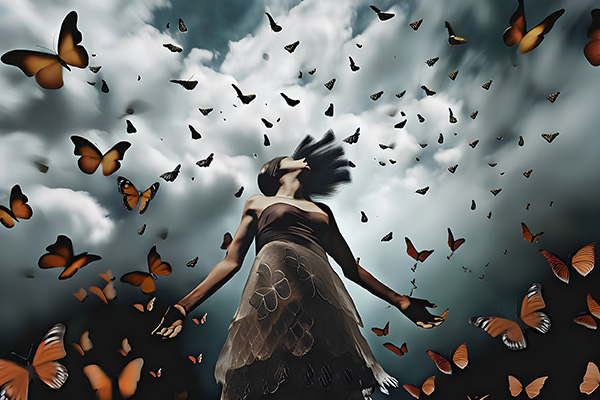 Every new year, I hear my clients complain about what they hope to change about themselves, what they want to change about themselves, or what they should be changing about themselves.
Every new year, I hear my clients complain about what they hope to change about themselves, what they want to change about themselves, or what they should be changing about themselves.
I then ask them why they are not claiming their power to change right now?
You do not have to wait until the New Year or some other major life event to make a change in your life. Once you’ve decided on a new path or course of action, the key is to stick with it for the long haul, taking small steps every day.
The Japanese call this kaizen, a philosophical concept that emphasizes continuous improvement, often in small increments. The idea is that by making consistent progress, even if it is just a little bit each day, you can eventually achieve significant results.
Sustainability should be the ultimate goal of whatever you decide to change in your life. While New Year’s resolutions are all noble and lofty, you have to acknowledge the inherent resistances and blockages you carry within and agree to be patient with yourself in order to ultimately get there.
I’m still working on some New Year’s resolutions I made in 2016. Do I look back in horror and say, “Why is it taking so long?” or “I really should be doing better!” Sometimes, yes! Do I use that as an excuse to backslide, fall off the wagon, or throw in the towel? Not at all, mostly because I’ve come to realize that if I hadn’t decided years ago to make those resolutions to make powerful changes in my life, I’d still be where I was, or worse. I’d be living a life of regret, not progress.
Embracing Art As A Spiritual Resource
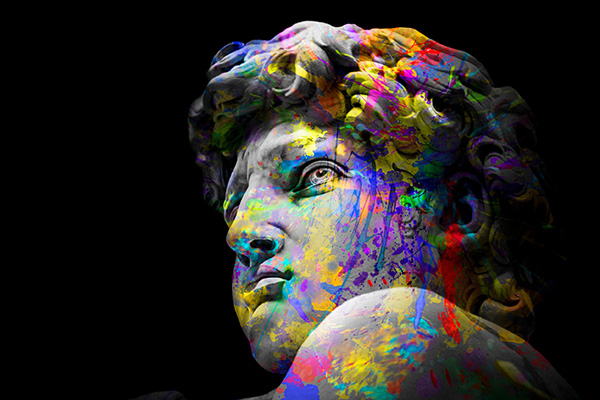 Art, in its many forms, continues to be a wonderful source of inspiration for my personal and spiritual growth journey. Art has the power to evoke emotion and connect us to feelings and something beyond the immediate boundaries of our lives.
Art, in its many forms, continues to be a wonderful source of inspiration for my personal and spiritual growth journey. Art has the power to evoke emotion and connect us to feelings and something beyond the immediate boundaries of our lives.
Whether it is a source of divine inspiration or an expression of spiritual wisdom, art has the potential to infuse our lives with beauty and eternal wisdom. Art is a profound spiritual resource.
The deep connection between Renaissance art and spirituality has not only shaped my own artistic and spiritual journey, but has resonated deeply with countless others throughout history.
The Renaissance, which spanned the 14th through the 17th centuries, was a time marked by a thirst for knowledge and exploration. Artists, scholars, and scientists sought to understand and communicate the mysteries of the world and our place in it. As a result, art emerged as a powerful vehicle for expressing and exploring spiritual themes.
Renaissance artists, often working under the patronage of religious institutions, were masters and storytellers of symbolism. Their works, rich with hidden meanings, served as visual representations of faith and devotion. Their artistic masterpieces, including paintings, tapestries, and sculptures, became integral to devotional practices during this period.
The Miraculous Roll Of Film
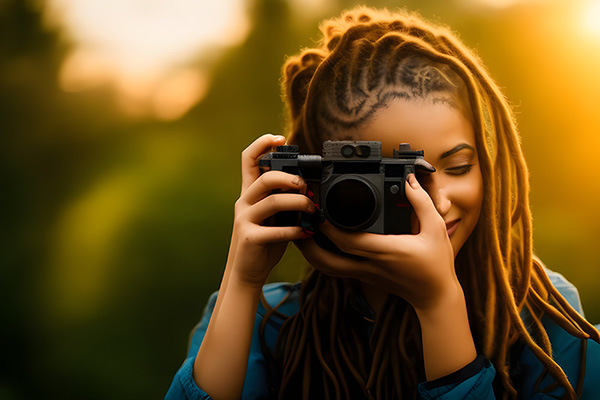 I have experienced many miracles and magical events in my life. As you read the following incredible story, you will see why I have chosen this particular one to best illustrate my experiences.
I have experienced many miracles and magical events in my life. As you read the following incredible story, you will see why I have chosen this particular one to best illustrate my experiences.
When I was 18 years old, I was working at a pre-school in my home town. One of the pupils was a three-year-old girl with whom I felt a real connection. She was an old soul; a bright and talented young artist.
But she usually came to school with unwashed, unbrushed hair and dirty clothes. She would never bring a packed lunch. When her parents came to collect her from school, they were often late and, unlike the other children, she did not run into their arms. There was clearly a disconnect between parent and child.
Eventually I moved several hours away and stopped working at the school. But I still thought of her often and prayed that she was well. A few years after I left, I made some enquiries, but no one knew what had happened to her. I hope she survived her difficult childhood and continued to create art, which I believed may have been her saving grace.
Two decades later, I was visiting the area around my hometown to go hiking with friends in a nearby national park. One day, one of my friends climbed a big rock and I followed him. Then he jumped down and I noticed what looked like something he had accidentally left behind.
“Hey, you dropped your roll of film up here,” I shouted, holding up the roll I’d found on the rock. But it turned out not to be his film and that someone else must have left it there. Maybe that person had the same idea of climbing the rock to take some pictures of the magnificent view.
Envisioning A Better World For All
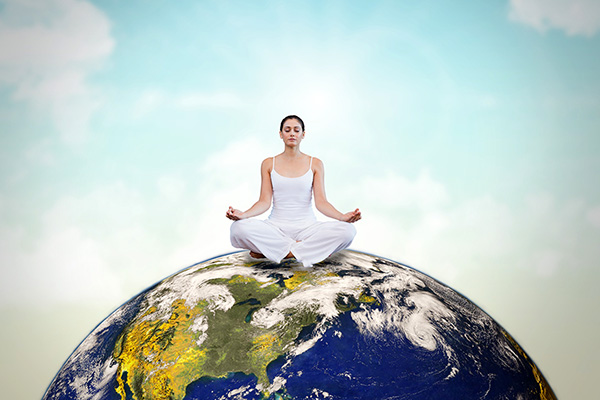 More than a century ago, the great Indian sage Paramahansa Yogananda spoke in his teachings and writings about envisioning a better world for all. He believed in the transformative power of individual and collective consciousness and emphasized the importance of spiritual practices such as meditation and self-realization in creating a more harmonious and compassionate world.
More than a century ago, the great Indian sage Paramahansa Yogananda spoke in his teachings and writings about envisioning a better world for all. He believed in the transformative power of individual and collective consciousness and emphasized the importance of spiritual practices such as meditation and self-realization in creating a more harmonious and compassionate world.
Yogananda stressed that true change begins within each individual. He believed that by working on our own spiritual growth and self-realization, we radiate positive energy and higher consciousness that contributes to a more peaceful and loving world.
He encouraged individuals to envision a new world of peace, harmony, and unity. By holding this vision in our minds and hearts, he believed, we could collectively bring it into being. Yogananda promoted the concept of universal brotherhood, which recognizes the interconnectedness of all beings. He encouraged people to look beyond differences of race, religion, and nationality and to treat one another with love, respect, and understanding.
Yogananda also spoke of the power of visualization and positive thinking. He saw prayer and meditation as powerful tools for individual and collective transformation. He encouraged individuals to live with a sense of purpose and to align their actions with higher ideals.
In a modern world filled with challenges and uncertainties, it is indeed essential that we hold on to a common vision of a better future. We must strive to create a world in which every individual, regardless of background or circumstance, can thrive.
The True Meaning Of Judgment
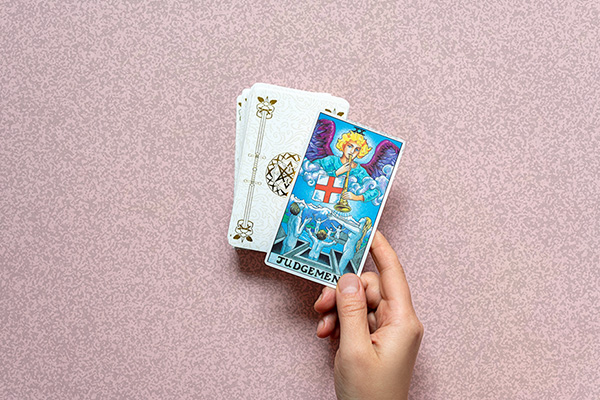 Judgment is card 20 in the Tarot’s Major Arcana. Arcana means “hidden things, mysteries,” from the Latin arcanum meaning “a secret, a mystery” and arcanus meaning “secret, hidden, private, concealed.” Arcana are therefore “pieces of mysterious knowledge or information.”
Judgment is card 20 in the Tarot’s Major Arcana. Arcana means “hidden things, mysteries,” from the Latin arcanum meaning “a secret, a mystery” and arcanus meaning “secret, hidden, private, concealed.” Arcana are therefore “pieces of mysterious knowledge or information.”
In a standard Tarot deck, there are 21 Major Arcana cards. They define The Fool’s journey (the first card) through life and all of the life lessons we encounter along the way. As one of the final stages in The Fool’s journey, the Judgment card represents having learned sufficient lessons to now awaken from the illusion and limited perceptions.
The most well-known tarot deck is the Rider–Waite. Pamela Coleman Smith, aka “Pixie,” was a British artist who illustrated the deck. She deserves much credit for the brilliant way she captured advanced spiritual concepts in the deck’s artwork.
The Rider–Waite Judgment card depicts three resurrected figures, a woman, man, and child, reaching up to an Archangel overhead blowing a trumpet as a wake-up call. The scene is based on Christian imagery representing the Resurrection and Last Judgment. The flag of St. George hangs from the trumpet, which references 1 Corinthians 15 in The Bible.
The Judgment card reminds us that no matter what our background may be, we can rise up and transcend any trauma or adversity in life, regardless how challenging the situation. We also have the power to see through the illusion of life and wake up to the truth.
From Fictional Self To Authentic Self
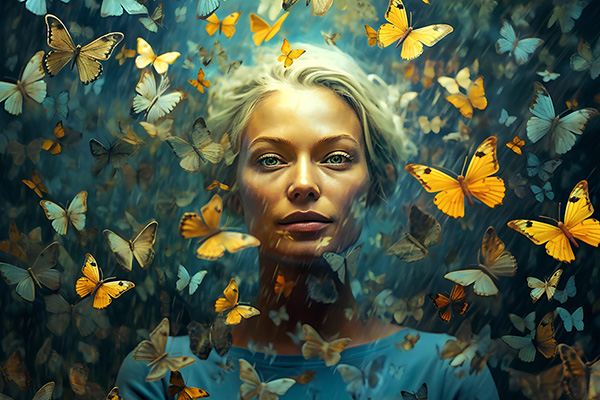 A new concept that seems to be going around a lot lately in the spiritual community is to be your ‘authentic self.’ But what does this really mean? How do you know who your authentic self is? Heck, you may say, “I’m still trying to find out what my life purpose is, never mind who I truly am!”
A new concept that seems to be going around a lot lately in the spiritual community is to be your ‘authentic self.’ But what does this really mean? How do you know who your authentic self is? Heck, you may say, “I’m still trying to find out what my life purpose is, never mind who I truly am!”
Well, as a result of our education, our upbringing, our family dynamics, our job, and such, when we are asked the question “who are you,” we resort to answers such as: a mom, a dad, engineer, doctor, janitor. We tend to express our identity by what work we do, what credentials we have, and what society or our community has told us to be. We are bombarded by social, political, environmental and family expectations that can overwhelm us in modern life.
On top of this, the world today seems to be in chaos. There is distrust everywhere, and we have to contend with challenges like identity theft and social peer pressure. Yet, we are now also expected to know our authentic self? “God, help me, I don’t have time to look for that! I have the kids to take care of, work deadlines to keep, dinner and laundry to do, and I urgently need to sign up for an exercise program to reduce my weight!”
It is never ending, you say. Your authentic self is somewhere, you just don’t know where and no time to find it. But that is just the point! All these things we are expected to do are there because of the pressure we put on ourselves. As we look through our colored lenses of self-inflicted expectations and the social pressure we have learned from family or peers, we lose touch with who we really are, and what we truly want.
Your Divine Talent Is A Gift To The World
 Talent competitions on television are spiritually intriguing. Although I do not watch much reality TV, I do see video clips of talented performers on my social media newsfeeds from time to time. And I am often in awe of the deeper spiritual implications of their remarkable talent.
Talent competitions on television are spiritually intriguing. Although I do not watch much reality TV, I do see video clips of talented performers on my social media newsfeeds from time to time. And I am often in awe of the deeper spiritual implications of their remarkable talent.
I have noticed in recent years, for example, a prevalence of very gifted young artists who sing, dance and play instruments, some with no formal training, as if they have many years of experience. There are youngsters who look like the kid next door, but when they perform, they have the star quality of professional artists who have had years of training.
I believe these gifted youngsters were born with gifts they brought with them from past life incarnations. I further believe they are spiritual conduits who are instrumental in helping to raise the vibration on this planet.
One of my recent favorite clips is of 13-year-old Malakai Bayoh singing Andrew Lloyd Webber’s Pie Jesu on Britain’s Got Talent. He truly has the voice of an angel, and you can palpably feel the energy of the audience in absolute awe as they watch him perform. It is said he sings at the 963 Hz Solfeggio frequency, also known as the ‘frequency of divine harmony’ or the ‘sound of the crown chakra.’
According to meditation teacher Griff Williams, the Solfeggio Frequency Scale is an ancient musical scale comprising nine original sound healing frequencies ranging from 174 Hz to 963 Hz that are energetically powerful and spiritually uplifting.